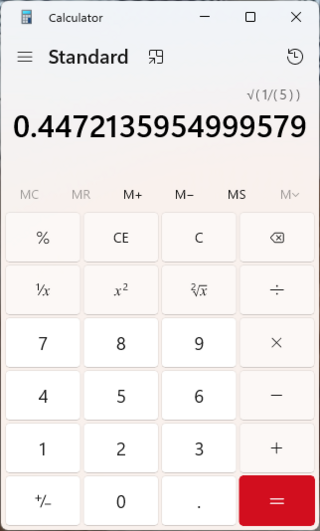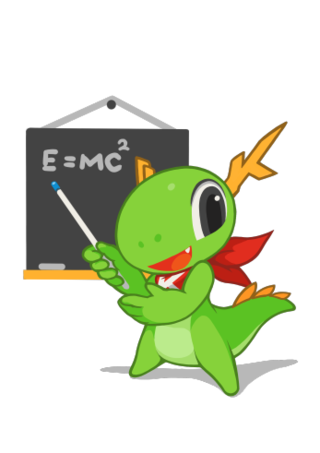
Scholastic Corporation is an American multinational publishing, education, and media company that publishes and distributes books, comics, and educational materials for schools, teachers, parents, children, and other educational institutions. Products are distributed via retail and online sales and through schools via reading clubs and book fairs. Clifford the Big Red Dog, a character created by Norman Bridwell in 1963, serves as Scholastic's official mascot.

In contemporary education, mathematics education—known in Europe as the didactics or pedagogy of mathematics—is the practice of teaching, learning, and carrying out scholarly research into the transfer of mathematical knowledge.

Windows Calculator is a software calculator developed by Microsoft and included in Windows. In its Windows 10 incarnation it has four modes: standard, scientific, programmer, and a graphing mode. The standard mode includes a number pad and buttons for performing arithmetic operations. The scientific mode takes this a step further and adds exponents and trigonometric function, and programmer mode allows the user to perform operations related to computer programming. In 2020, a graphing mode was added to the Calculator, allowing users to graph equations on a coordinate plane.
TK Solver is a mathematical modeling and problem solving software system based on a declarative, rule-based language, commercialized by Universal Technical Systems, Inc.
Principles and Standards for School Mathematics (PSSM) are guidelines produced by the National Council of Teachers of Mathematics (NCTM) in 2000, setting forth recommendations for mathematics educators. They form a national vision for preschool through twelfth grade mathematics education in the US and Canada. It is the primary model for standards-based mathematics.

Soup2Nuts was an American animation studio founded by Tom Snyder. The studio is known for its animated comedy series, its use of Squigglevision, a technique of animation that reuses frames to make the animation look more kinetic, and for its style of improvisation in voice acting.
The Iowa Assessments also known informally as the Iowa Tests, formerly known as the ITBS tests or the Iowa Basics, are standardized tests provided as a service to schools by the College of Education of the University of Iowa. Developers Everett Franklin Lindquist, Harry Greene, Ernest Horn, Maude McBroom, and Herbert Spitzer first designed and administered the tests in 1935 as a tool for improving student instruction. The tests are administered to students in kindergarten through eighth grade as part of the Iowa Statewide Testing Programs, a division of the Iowa Testing Programs (ITP). Over decades, participation expanded and currently nearly all school districts in Iowa participate annually in the program, as do many other school districts across the United States. In a cooperative relationship, participating schools receive ITBS test materials, scoring and reporting services and consultation in the use of ITBS for instructional purposes, and ITP utilizes participation by schools in research and test development. Both the ITBS and Iowa Tests of Educational Development (ITED) were revised in the 2011–2012 school year. They were rebranded the Iowa Assessments. In 2016–2017, Iowa Assessments will roll out their new testing program, Next Generation Iowa Assessments.
A worksheet, in the word's original meaning, is a sheet of paper on which one performs work. They come in many forms, most commonly associated with children's school work assignments, tax forms, and accounting or other business environments. Software is increasingly taking over the paper-based worksheet.
Traditional mathematics was the predominant method of mathematics education in the United States in the early-to-mid 20th century. This contrasts with non-traditional approaches to math education. Traditional mathematics education has been challenged by several reform movements over the last several decades, notably new math, a now largely abandoned and discredited set of alternative methods, and most recently reform or standards-based mathematics based on NCTM standards, which is federally supported and has been widely adopted, but subject to ongoing criticism.
Math wars is the debate over modern mathematics education, textbooks and curricula in the United States that was triggered by the publication in 1989 of the Curriculum and Evaluation Standards for School Mathematics by the National Council of Teachers of Mathematics (NCTM) and subsequent development and widespread adoption of a new generation of mathematics curricula inspired by these standards.
Singapore math is a teaching method based on the national mathematics curriculum used for first through sixth grade in Singaporean schools. The term was coined in the United States to describe an approach originally developed in Singapore to teach students to learn and master fewer mathematical concepts at greater detail as well as having them learn these concepts using a three-step learning process: concrete, pictorial, and abstract. In the concrete step, students engage in hands-on learning experiences using physical objects which can be everyday items such as paper clips, toy blocks or math manipulates such as counting bears, link cubes and fraction discs. This is followed by drawing pictorial representations of mathematical concepts. Students then solve mathematical problems in an abstract way by using numbers and symbols.

The KDE Education Project develops free educational software based on the KDE technologies for students and parents. These educational software is translated into more than 65 languages, so that users can access them without any problems. The KDE-Edu project also provides free software educational to support and facilitate teachers in planning lessons.
The Common Core State Standards Initiative, also known as simply Common Core, was a multi-state educational initiative begun in 2010 with the goal of increasing consistency across state standards, or what K–12 students throughout the United States should know in English language arts and mathematics at the conclusion of each school grade. The initiative was sponsored by the National Governors Association and the Council of Chief State School Officers.

Mathnasium is an American education brand and supplemental math learning franchise consisting of over 1,000 learning centers in North America, South America, Europe, the Middle East, and Asia that provides instruction to students in pre-kindergarten through high school. The curriculum employs the Mathnasium Method, a proprietary system that was developed by a team of education experts with co-founder Lawrence Martinek.
In mathematics education, a representation is a way of encoding an idea or a relationship, and can be both internal and external. Thus multiple representations are ways to symbolize, to describe and to refer to the same mathematical entity. They are used to understand, to develop, and to communicate different mathematical features of the same object or operation, as well as connections between different properties. Multiple representations include graphs and diagrams, tables and grids, formulas, symbols, words, gestures, software code, videos, concrete models, physical and virtual manipulatives, pictures, and sounds. Representations are thinking tools for doing mathematics.
READ 180 is a reading intervention program created by the Scholastic Corporation (Scholastic). Its focus is to utilize adaptive technology to improve literacy in students in Grades 4–12 who read at least two years below their grade level.

Amplify is a curriculum and assessment company launched in July 2012. Amplify Curriculum was built on the foundation of Wireless Generation, an educational company the original News Corp bought in 2010. Amplify products and services provide assessment and analytics for data-driven instruction and next-generation digital curriculum based on the Common Core State Standards.

DreamBox Learning is an American online software provider that focuses on mathematics education and reading education at the elementary, middle school, and for reading, the high school level. The mathematics software provides pre-kindergarten through 8th-grade students with over 2,000 lessons presented as animated adventures, games, and challenges, while the reading software provides students in elementary to high school levels with articles to boost their reading skills.

MobyMax is an online education program used by grades K-8. MobyMax includes 27 subjects including math, reading, phonics, language, vocabulary, spelling, writing, science, social studies, preparations for state examinations, and more. The program also provides classroom tools such as assessments and progress monitoring and offers games, badges, and contests for the students.

Mathletics is an online educational website which launched in 2005.










